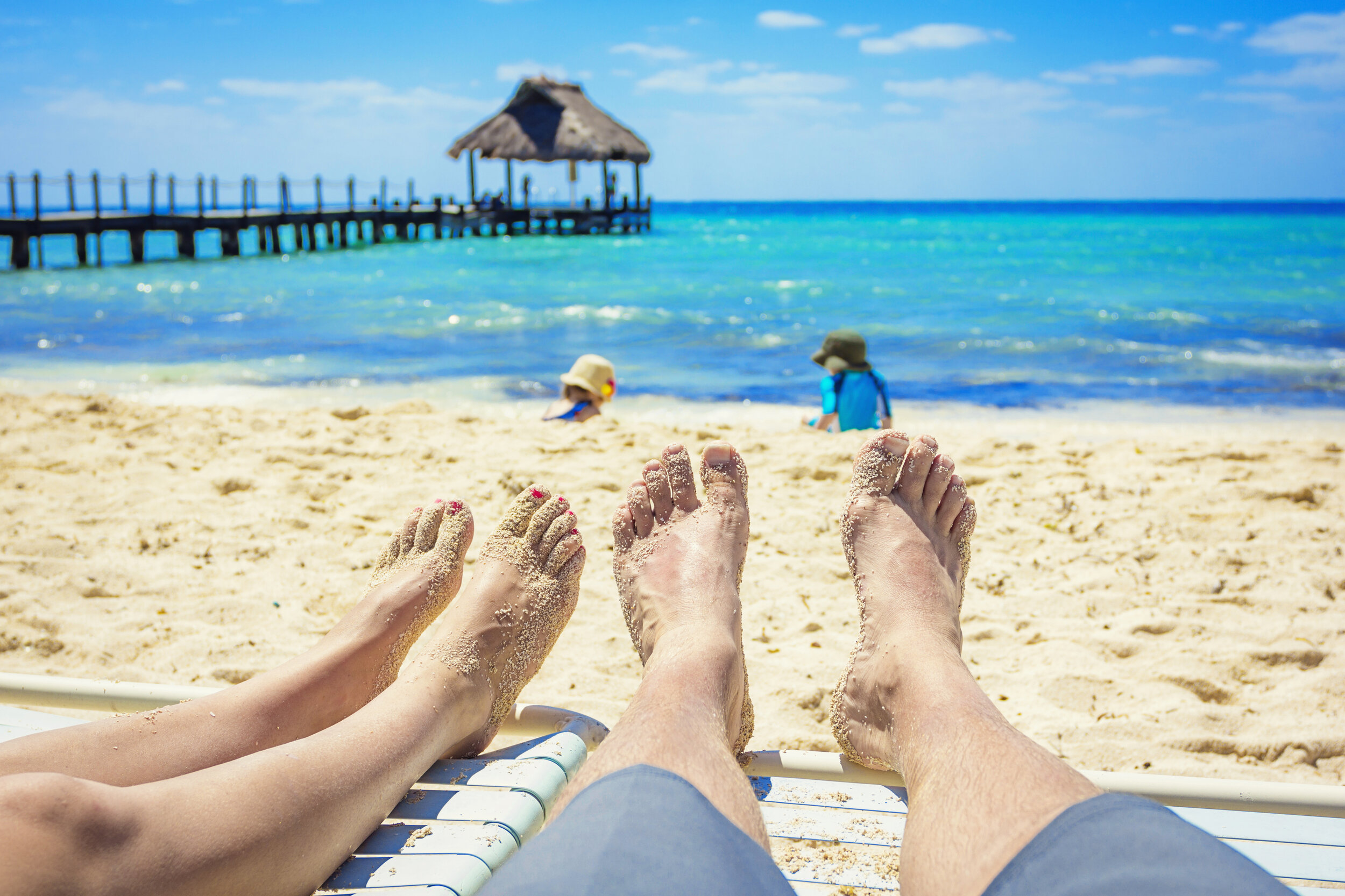The Riviera Maya is one of the most popular destinations in Mexico with its exotic flora and fauna, spectacular landscapes, white-sand beaches and turquoise, crystal-clear waters.
Riviera Maya Basics
Getting there – Visitors traveling by plane will arrive at the Cancun International Airport, one of the top airports in the world. The airport is about an hour north of the Riviera Maya and visitors can get to their destination via shuttle, taxi or rental car.
Location – Riviera Maya begins at Punta Brava, to the south of Puerto Morelos, and ends at Punta Herrero, to the south of the Sian Ka’an Biosphere Reserve.
Climate - Climate is a big appeal for many Riviera Maya visitors. The city’s annual average temperature is 85 degrees Fahrenheit with a rainy season from late summer to early fall.
Currency – When it comes to dinero, travelers have a variety of options. The peso is the official currency of Mexico, however, a majority of tourist establishments are happy to accept U.S. dollars and most major credit cards.
Language – Nosotros hablamos español, Spanish is the official language of Mexico and the Riviera Maya. Forgot to brush up on your speaking skills? No worries, English is used in all tourist locations.
Lodging
It’s easiest to picture the Riviera Maya as three main areas: north, middle and south. Playa Del Carmen is in the middle and acts as a central hub of the Riviera Maya. To the north of Playa travelers will find beaches and resort enclaves and to the south of Playa are numerous parks and attractions like Xcaret, Rio Secreto and Xplor.
As for accommodations, you’ll find Riviera Maya has something for every expectation, budget and desire. There are cozy eco-boutique hotels, expansive family resorts, adult-only resorts, properties devoted to holistic renewal and a slew of all-inclusive hotels.
Food
The “Maya” component of the “Riviera Maya” equation is evident in the many exquisite regional dishes of the area. In fact, the National Association of Restaurateurs has awarded Riviera Maya’s restaurants its highest award of excellence in preparation of regional dishes. Because Riviera Maya has received such a varied influx of travelers and residents from around the world, it’s only natural that visitors have brought their international cuisines with them. This means you’ll find Italian restaurants, Argentine chefs, Cuban eateries and French delicacies. Not to mention, the Riviera Maya is a top destination for seafood lovers as many restaurants take complete advantage of the choice local seafood caught fresh every morning.
Fun
The Riviera Maya has so much to offer; here are a few of our favorite attractions.
Unique attractions – Riviera Maya is home to some truly special places.
Sian Ka’an Biosphere Reserve – This 1.6-million-acre reserve is just 6 km south of the Tulum ruins and is Mexico’s largest protected area. This park is so huge that several different ecosystems exist within its territory. From semi evergreen tropical forests and wetlands to savanna and ocean, this UNESCO World Heritage Site has it all. The park is also home to an incredible abundance of animals with magnificent cats including the jaguar, puma, ocelot, margay and jaguarondi, thousands of howler monkeys; crocodiles and other reptiles; and over 345 species of birds.
Akumal – Literally translating to “place of the turtles”, Akumal is the place to be for researchers and marine-life enthusiasts. The silky, white-sand beaches at Akumal are protected by offshore reefs making them the perfect habitat for a variety of underwater life. Visitors can also enjoy diving, swimming, beachfront restaurants and snorkeling.
Rio Secreto – Rio Secreto offers 9 miles of spectacular underground caverns studded with stalactites, stalagmites and an abundance of cenotes to explore by foot and underwater.
Shopping – Playa Del Carmen’s very own 5th avenue, La Quinta Avenida is a beachy pedestrian byway that stretches about 20 blocks from the Paseo del Carmen outdoor shopping center at the southern end all the way to the northern city. Travelers can enjoy exciting restaurants, bustling nightlife and world-class shopping. One especially notable attraction along La Quinta Avenida is L’Aquarium where visitor entry fees contribute to coral farming. L’Aquarium allows visitors to view the wonders of the Caribbean Sea without getting their feet wet in their famous cenote room.
Adventure – Xcaret, a 200-acre eco-archeological park that combines the best of the Riviera Maya all in one place, is the best place to get some adventure in the Riviera Maya. Visitors can float through crystal clear grottoes, admire beautiful coves and cenotes and make friends with a dolphin. Add in a Mayan village, good food and exotic animal exhibits and you have a destination attraction like none other.
History and Culture
As you may have guessed by now, Mayan culture is the foundation of this area of the Caribbean. The Mayans built their cities based on their deep knowledge of and love for nature. The result of this careful planning gave rise to cities such as Muyil, Cobá and Tulum.
Tulum – Tulum was one of only a handful of Mayan port cities still in use when the Spaniards first arrived in the 16th century. Today, visitors can roam its small temples and buildings, including the Temple of the Frescoes and the Temple of the Descending God. There are also over 60 well-preserved structures on-site. We recommend travelers take a swim in the small beach beside the site so they can look up at the ruins and marvel at the Maya’s ingenuity.
Cobá – Shrouded by thick jungle, travelers will definitely get that Indian Jones vibe as they make the journey to this historical Maya site. Cobá was once a huge city, but just 5 percent of it has been excavated so far and it’s just now being extensively studied by archeologists. Cobá was built between two lakes around A.D. 600-900. The site was home to about 50,000 inhabitants and the main pyramid, Nohoch Mul, is the second tallest pyramid in the Yucatan peninsula. Visitors can interact with local Mayan communities, explore the rainforest, zip-line over a huge cenote and, of course, climb to the top of the pyramid.
Muyil – Muyil, translated to “place of the rabbits,” is located within the Sian Ka’an Biosphere Reserve and is one of the earliest ancient Maya sites. The main part of the structure dates back to A.D. 850-1539 where it acted as part of the commercial route connecting to the great city of Chichén Itzá. Travelers can marvel at several important structures such as “El Castillo,” or the Castle, and an impressive observation tower overlooking the dense forest.
So when you are ready to relax and put your feet up on one of the beautiful beaches in the Riviera Maya, contact Becker World Travel. Thanks for reading!



